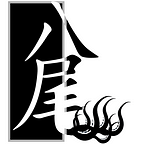Japanese Shinto Shrine and Buddhist Temple. How do you know which have you stepped into?
Are you confused by what is a Shinto shrine and a Buddhist temple in Japan? Here are some tell tale signs to help you differentiate between the two next time you visit! Shinto shrines are where Kami (神) are worshipped, while Buddhist temples are dedicated to the Buddhas (仏陀).
1.Look at the Entrance
Shinto Shrine : Did you know Shinto shrines in Japan typically have a Torii gate at the entrance, symbolizing the boundary between sacred and secular. The gate is usually painted vermilion red and/or made of wood or stone.
Buddhist Temple: A Buddhist temple typically features a grand entrance gate known as a sanmon, which is a two-story gate that serves as the main entrance to the temple complex. At the entrance, you may find two powerful and fierce-looking guardians of the Buddha known as Niō.
2. Look at what is being worshipped
Shinto Shrine: Shinto doesn’t make images of kami, but uses objects called yorishiro to attract them. Kami can be anything, from a tree to an animal statue, as they are believed to be in everything — Yaoyorozu no kami (八百万の神).
Buddhist Temple: Buddhists make images and statues of Buddhas and enshrine them in temples, but Buddhas do not live in temples.
3. The unique items found in the Shinto shrine compound
a. Shimenawa: A thick, twisted rope made of rice straw that is hung around sacred objects or spaces to demarcate their spiritual boundary. Often seen around trees or rocks that are considered to be inhabited by spirits.
b. Ema: Small wooden plaques on which worshippers write their wishes or prayers, and then hang on designated stands or trees within the shrine grounds.
c. Kagura-den: A hall within the shrine where kagura performances (traditional music and dance depicting stories of the kami) are held. ps: Check out my other post on Kagura performance https://twitter.com/0xWyne/status/1653065045465780224?s=20)
4. The unique items found in the Buddhist temple compound
a. Pagoda: A tower-like structure with multiple eaves, used for religious purposes. It is often used to store relics or sacred texts.
b. Incense burner: Burning incense is an important part of Buddhist worship, and many temples have large incense burners where worshippers can light incense and offer prayers
c. Bell or gong: Temples usually have a large bell or gong that is used to signal the start of services and other important events.
5. The common items that can be found in both compounds:
a. Purification fountain: A purification fountain, or temizuya, is a common feature at shrines and temples. Worshippers use it to purify their hands and mouth before entering the main hall.
b. Offering box or saisen-bako (賽銭箱): Temples and shrines often have a wooden box where visitors can make monetary offerings to support the upkeep of the compounds and its activities.
c. Tōrō (lanterns) — were originally used only in Buddhist temples, where they lined and illuminated paths. Lit lanterns were then considered an offering to Buddha. During the Heian period (794–1185), however, they started being used also in Shinto shrines and private homes.
Steps to pray in a shrine and temple
Praying steps are different in Shinto shrines and Buddhist temples too. Click here to learn how to do them correctly to avoid being seen disrespectful.
Syncretism of Shintoism & Buddhism.
Buddhism & Shintoism are usually practiced separately in Japan, but in rare regions they coexist harmoniously. Follow me @TouriiJP and 0x8Tails for a glimpse into a hidden world where legends come alive and where Kami & Buddhas live alongside the locals.
Conclusion If you’re interested in exploring the lesser-known aspects of daily life in Japan, be sure to like, share, and follow me here for fascinating tips!
